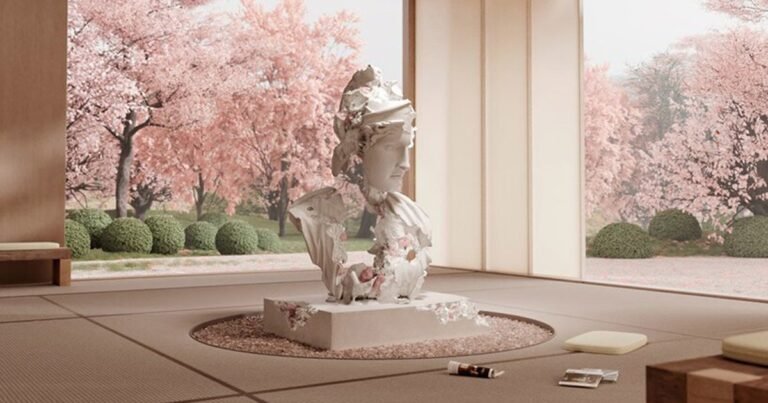this apartment by clément lesnoff-rocard is suspended above the rooftops of paris
at the edge of the paris roofscape
French architect Clément Lesnoff-Rocard designs an apartment in Paris, its soft tones and curving edges washed in sunlight. The two-story penthouse space is given the name ‘the Edge,’ in reference to its position suspended just above the city’s iconic rooftops. The architect tells designboom: ‘This space gave me this very specific feeling that you have when you find yourself on a cliff, attracted by its edge, mesmerized by the beauty of the landscape and quietly terrified of falling down. Intense. This had to be a topic to work with for me, this edge.’
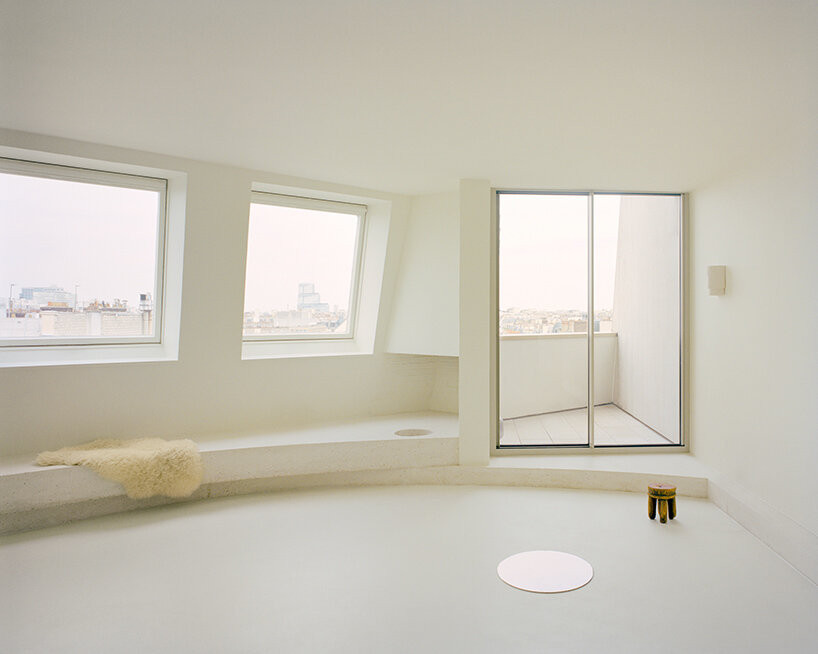 images by Laurent Kronental | @laurentkronental
images by Laurent Kronental | @laurentkronental
the parisian building’s skewed layout
Describing the 1980’s-era building which houses the Edge, Clément Lesnoff-Rocard notes its unique layout. While the overall envelope aligns with the boulevard below, the interiors are laid on an angle. ‘Like if someone pushed too hard on the edge of the building,’ the architect explains, ‘bending everything inside so you can nearly never face any neighbor and creating unusual and sharp angles in the floor plan.’ This condition, ‘straight skin with twisted bones,’ lends to more atypical floor plans, divided by slanting walls creating truncated rooms.
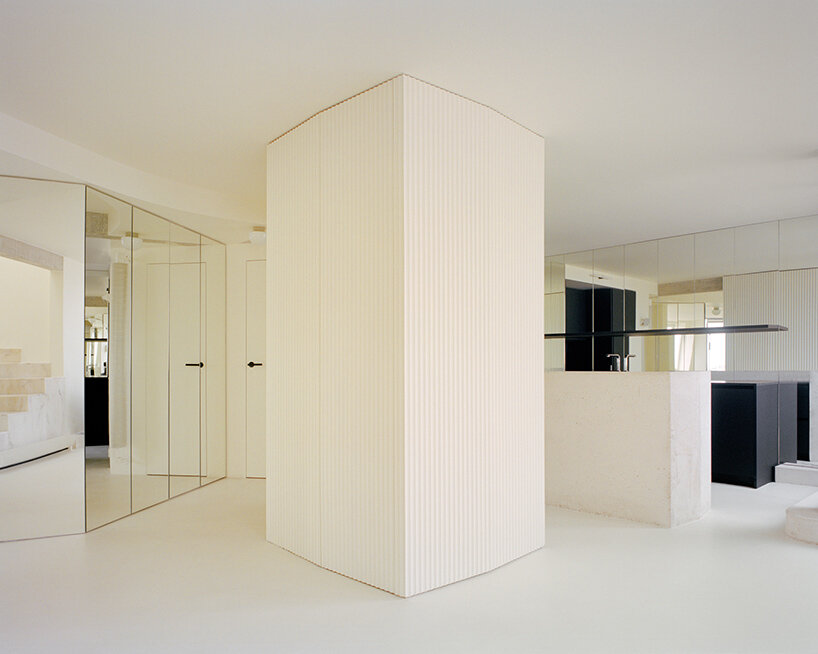
a landscape of edges and materials by clément lesnoff-rocard
The design builds off of the concept of ‘the edge,’ which Clément Lesnoff-Rocard views from both a metaphorical and physical perspective. The designer develops a physical vocabulary of edge-types — concrete edges softened with gentle curves, or foam board edges hardened with sharp lines. Views across Paris are brought inside through bay windows, while the interiors are illuminated from above with skylights. Different edges are contrasted with their materiality of blackened wood and white paint, or of white marble and light concrete.
With its textural surfaces, concrete elements appear softened when paired against smooth, white-painted walls — against a shaggy pillow, it reads as solid and heavy once again. In these ways, the dialogue between materials helps to celebrate or transform their individual nuances.
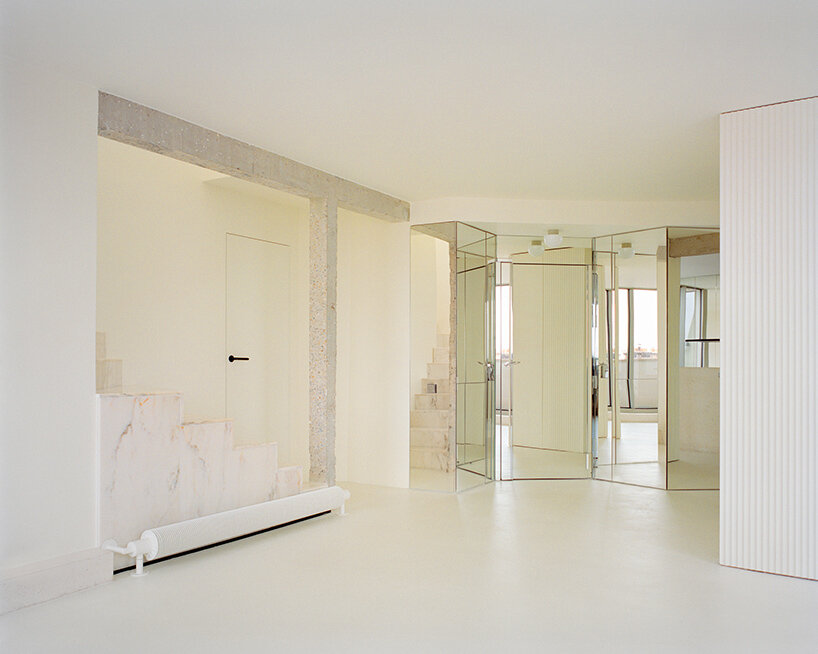
‘the edge is like the present: being everything without even existing‘ 
‘as a creator, I strive to extend the edge of my own knowledge in every new story‘ 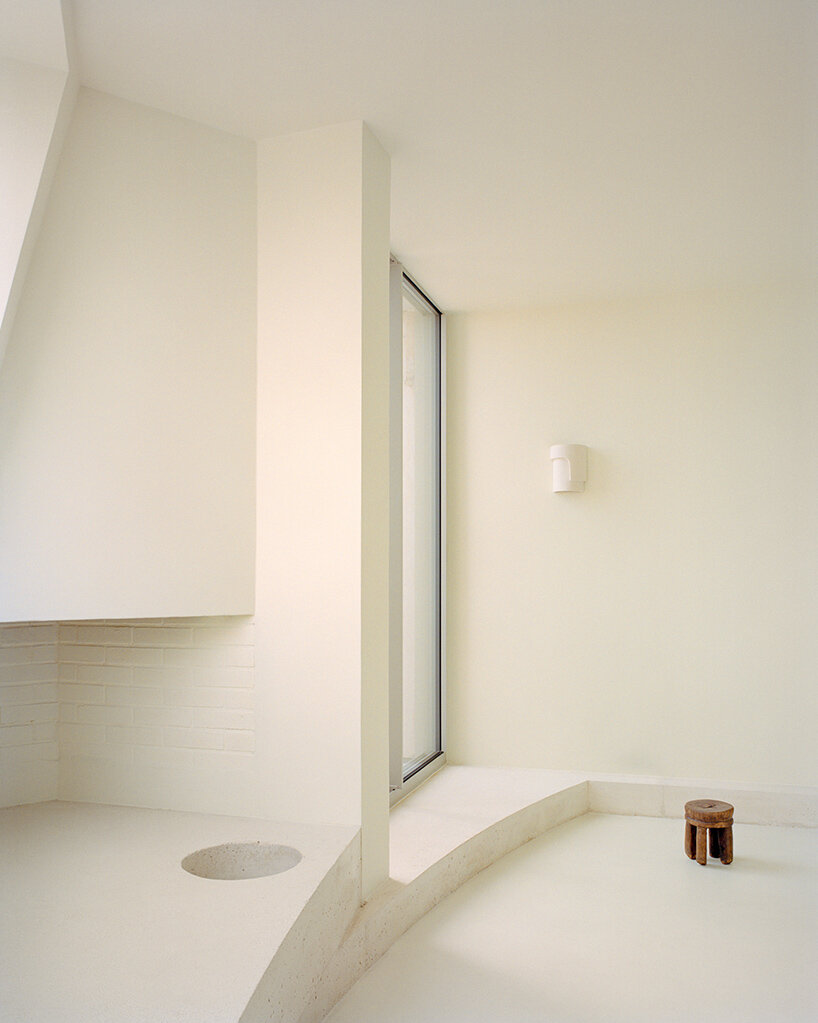
‘as a human being, I am just happy with the present, embracing this edge as it is‘

